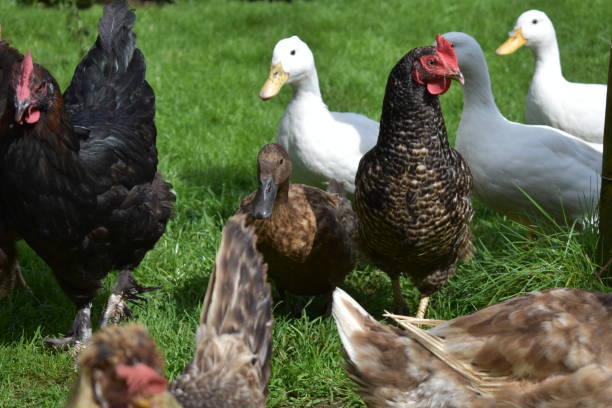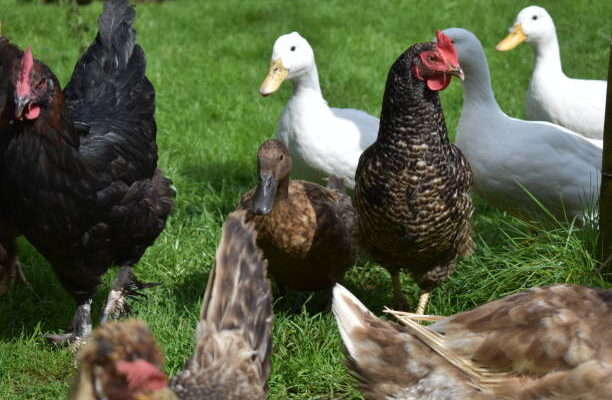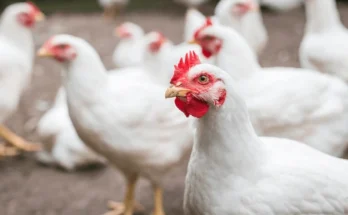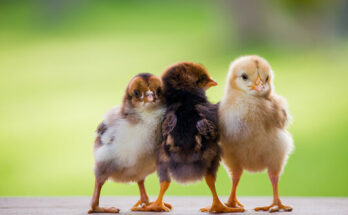Comprehensive Guide to Keeping Chickens and Ducks Together
Are you considering keeping chickens and ducks together? While this living arrangement can be mutually beneficial, it’s important to understand the unique characteristics and needs of each species. In this post, we’ll explore the benefits and challenges of cohabitating chickens and ducks, and provide valuable insights into creating a harmonious environment for both. Understanding the behaviors and requirements of these feathered friends is vital for their well-being and successful cohabitation. Join us as we delve into the considerations for keeping chickens and ducks together, and discover how to ensure a happy and healthy living situation for both species.
Understanding the Compatibility of Chickens and Ducks
When considering keeping chickens and ducks together, it’s vital to understand the behavioral characteristics of each species, their housing and space requirements, feeding considerations, and their social dynamics and pecking order.
Behavioral Characteristics of Chickens and Ducks
Chickens are generally more territorial and can be aggressive towards unfamiliar animals, including ducks. They establish a pecking order within their flock and may exhibit dominant behavior. On the other hand, ducks are often more social and peaceful, preferring to form close-knit groups. Understanding these differences in temperament is crucial when introducing chickens and ducks to the same space.
Housing and Space Requirements
Chickens and ducks have similar basic needs for shelter and space, but there are some differences to consider. Both require protection from predators and the elements, but ducks need access to water for swimming and foraging. Their coops should be spacious enough to accommodate both species comfortably, with separate nesting areas to prevent any potential conflicts.
Feeding Considerations
While chickens and ducks can eat the same types of feed, the manner in which they consume it differs. Ducks are messy eaters due to their aquatic nature and may require feeders placed at a higher level to avoid wastage. Additionally, ducks need access to water for drinking and feeding, which should be factored into their feeding area’s design.
Social Dynamics and Pecking Order
Chickens and ducks have distinct social structures. Chickens establish a pecking order, and introducing ducks to an established chicken flock can lead to tension as they integrate into the hierarchy. It’s essential to monitor their interactions closely during the initial stages to ensure a harmonious coexistence.
Understanding the compatibility of chickens and ducks involves acknowledging their behavioral differences, accommodating their housing and space requirements, addressing feeding considerations, and managing their social dynamics to facilitate a cohesive and peaceful living environment.

Creating a Suitable Environment for Both Species
When keeping chickens and ducks together, it’s essential to create a suitable environment that meets the specific needs of both species. A shared habitat should ensure their safety and well-being while providing the necessary resources for their natural behaviors and activities.
Coop and Run Design
The coop and run design for housing chickens and ducks together should be spacious enough to accommodate both species comfortably. Ensure that the coop has separate nesting and roosting spaces for each, as chickens and ducks have different preferences for perching and resting. Additionally, the run should have secure fencing to prevent any conflicts between the two species while allowing them to forage and roam freely.
Water Source and Swimming Area
Both chickens and ducks require access to clean water for drinking and bathing. In the shared environment, it’s important to provide a water source that accommodates the ducks’ need for swimming and the chickens’ need for drinking. Incorporating a small pond or shallow swimming area within the run can fulfill the ducks’ requirement for water while ensuring that the chickens have access to their own clean water source.
Nesting and Roosting Spaces
For chickens, nesting boxes that are elevated and enclosed provide a suitable environment for laying eggs and seeking refuge. Ducks, on the other hand, prefer ground-level nesting areas with ample bedding material. Creating separate nesting spaces within the coop allows each species to express their natural nesting behaviors without competition.
Environmental Enrichment
Enriching the shared habitat with natural elements such as branches, logs, and perches can provide environmental stimulation for both chickens and ducks. Creating varied terrain and incorporating hiding spots and grazing areas within the run encourages natural foraging behaviors and keeps the birds mentally and physically active.
By considering these key elements when designing the coop and run, you can create a harmonious environment that caters to the specific needs of both chickens and ducks while promoting their well-being and safety.
Health and Hygiene Practices for Mixed Flocks
Taking care of the health and hygiene of mixed flocks comprising both chickens and ducks is essential to ensure their overall well-being. Here are some important practices to follow:
Biosecurity Measures
Biosecurity is crucial in preventing the introduction and spread of diseases within mixed flocks. Implement the following measures to maintain a healthy environment:
- Quarantine Procedures: When introducing new birds to the flock, segregate them for a period of time to observe for any signs of illness before allowing direct contact with existing birds.
- Restricted Access: Limit access to the coop and run area to essential personnel only. This helps minimize the risk of introducing diseases through contaminated equipment or clothing.
- Sanitation Practices: Regularly clean and disinfect equipment, such as feeders, waterers, and housing, to prevent the spread of pathogens.
Common Health Issues and Treatment
Both chickens and ducks are susceptible to various health issues, so it’s important to be aware of common problems and their treatments:
- Respiratory Infections: Keep an eye out for symptoms like wheezing or nasal discharge, which could indicate a respiratory infection. Consult a veterinarian for appropriate treatment, which may involve antibiotics.
- Parasite Infestations: Regularly inspect birds for parasites such as mites and lice. Use appropriate treatments to control infestations and prevent them from spreading.
- Bumblefoot: Ducks and chickens can develop bumblefoot, a bacterial infection of the feet. Prompt treatment and keeping the living area clean can help prevent this condition.
Cleaning and Maintenance Protocols
Establishing a robust cleaning and maintenance routine is essential for preventing the buildup of pathogens and maintaining a healthy environment:
- Regular Coop Cleaning: Clean the coop and nesting areas regularly to remove droppings and soiled bedding, which can harbor bacteria and parasites.
- Proper Waste Management: Dispose of manure and soiled bedding away from the coop to reduce the risk of disease transmission.
- Water Management: Ensure clean, fresh water is provided to both chickens and ducks, and clean waterers routinely to prevent contamination.
By implementing these biosecurity measures, being aware of common health issues, and maintaining thorough cleaning and maintenance protocols, you can help ensure the well-being of your mixed flock. Regular veterinary check-ups and consultations for disease prevention and parasite control are also key components of effective flock management.
Managing Feeding and Nutritional Needs
Keeping chickens and ducks together requires careful management of their feeding and nutritional needs. Both species have specific dietary requirements, and it’s important to ensure that they receive a balanced diet to support their health and well-being.
Feeding Strategies
When feeding chickens and ducks together, it’s essential to consider their different feeding behaviors. Chickens tend to peck and scratch for food on the ground, while ducks are more inclined to forage and dabble in water. To accommodate these differences, providing separate feeding areas can be beneficial. This ensures that each species can access their preferred food without competition or wastage.
Balancing Dietary Differences
Chickens and ducks have varying nutritional needs. Chickens require a diet higher in protein to support egg production, while ducks need a diet that meets their higher niacin requirements for overall health and proper feather development. A well-balanced poultry feed formulated for mixed flocks can be a practical solution to address these differences. Additionally, supplementing with individual feeds specific to each species can help ensure their specific nutritional needs are met. We have an in-depth resource here about poultry nutrition which you can check.
Supplements and Treats
In addition to their main feed, offering supplements and treats can be an enjoyable and beneficial part of managing the nutrition of chickens and ducks. Providing access to fresh greens, such as lettuce and kale, can offer essential vitamins and minerals. Furthermore, offering scratch grains as a treat can be a source of enrichment and entertainment for both chickens and ducks.
When keeping chickens and ducks together, careful attention to their dietary requirements is crucial for their overall health and productivity. By implementing appropriate feeding strategies, addressing dietary differences, and incorporating suitable supplements and treats, it’s possible to ensure that both species receive the essential nutrients they need to thrive in a shared environment.
Social Integration and Behavioral Considerations
Integrating new birds into an existing flock of chickens and ducks requires careful consideration of their social dynamics. Understanding the behaviors and interactions between these avian species is crucial for a harmonious coexistence. Here’s a closer look at introducing new birds, managing conflicts, and observing their interactions.
Introducing New Birds
When introducing new chickens or ducks to an established flock, it’s essential to provide a gradual integration process. This can involve using a temporary barrier within the coop or run to allow visual interaction without physical contact. Additionally, introducing new birds during the evening can help reduce aggression, as they are less likely to engage in territorial disputes under the cover of darkness.
Conflict Resolution and Pecking Order
Chickens and ducks have their own social hierarchy, often referred to as the “pecking order.” It’s natural for conflicts to arise during the establishment of this hierarchy, but serious aggression should be monitored and managed. Providing multiple feeding and watering stations can help reduce competition for resources, while ensuring adequate space within the coop and run can minimize territorial disputes.
Observing and Understanding Interactions
Regular observation of the flock’s interactions is key to understanding their social dynamics. Pay attention to body language, vocalizations, and overall behavior to gauge the integration progress. Establishing a balance between intervention and allowing natural social adjustments is crucial for fostering a cohesive flock environment.
Understanding the social dynamics between chickens and ducks and implementing thoughtful integration strategies can lead to a harmonious and balanced flock. By considering the behaviors and interactions of these avian species, you can create a cohesive environment that promotes positive social integration and overall well-being.
Conclusion
In the journey of exploring the dynamics of keeping chickens and ducks together, it becomes apparent that while there are challenges, the rewards are myriad. From the compatibility in housing to the mutual benefits in pest control, the harmony between these creatures can bring a diverse range of advantages to a homestead or farm. As we’ve discussed the nuances of cohabitating these feathery friends, it’s evident that with proper planning, space, and provisions, the coexistence of chickens and ducks can flourish. The decision to house these birds together ultimately lies in the hands of the caretaker, who should carefully weigh the considerations before embarking on this communal endeavor.



